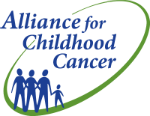Childhood Cancer Advocates Meet with Leaders of the National Cancer Institute
By
Gregory J. Aune, MD, PhD, Member, NCI Council of Research Advocates (NCRA)
and
Danielle Leach, MPA, Co-Chair, Alliance for Childhood Cancer
Building on the momentum of so many community activities from the early summer and September, the childhood cancer advocacy community has witnessed an unprecedented effort by the National Cancer Institute (NCI) to establish a productive dialogue between advocates and the Institute’s leaders in Bethesda. On November 5th, NCI Director Dr. Harold Varmus and other leaders of the National Cancer Institute met with childhood cancer advocates on the National Institutes of Health campus. Advocate and parent Jonathan Agin had proposed the meeting at the White House event when he introduced himself to Dr. Varmus. For a full review of the circumstances leading up to the meeting, please read Mr. Agin’s blog entry on the Huffington Post. I was invited as the NCRA representative and Danielle Leach as Co-Chair of the Alliance for Childhood Cancer. In addition to his role in initiating the meeting, Jonathan is a member of the Coalition Against Childhood Cancer (CAC2).
Dr. Varmus began the meeting by reviewing four childhood cancer specific activities that should energize our community:
· The Pediatric MATCH trial. A repeat of what he discussed at the White House meeting, including additional thoughts on how this trial will benefit research efforts directed at pediatric cancer. We also discussed the need for education, because it is vitally important that the advocacy community understand the goals of this trial.
· A genomics workshop. He outlined the current efforts to bring together scientists and advocates for a meeting focusing on pediatric cancer genomics research in early 2015. NCI scientists hope that this meeting will help identify key areas in the field of pediatric precision medicine where researchers might focus.
· Provocative Questions Initiative. Dr. Varmus discussed the NCI provocative question initiative and how it relates to childhood cancer. While it is his opinion that many of the existing questions are relevant to pediatric cancer, he is open to the idea of holding pediatric-focused provocative question workshops at two to three strategic sites across the country.
· The NCI bypass budget. A specific narrative section on childhood cancer in the upcoming NCI bypass budget was released in early December: http://www.cancer.gov/aboutnci/budget_planning_leg/plan-2016/cancer-research.
The meeting then turned to a discussion of some of his additional thoughts on childhood cancer. First, he stressed that talented individuals with good ideas drive success in research. Therefore, it would be prudent for the advocacy community to consider ways that we can attract the most talented researchers into our field. As we continued our discussion, it became evident that there will be up to four meetings sponsored by the NCI in 2015 focused on pediatric cancer, an unprecedented effort to establish and foster a productive dialogue and bring the childhood cancer advocacy community together. As we left the meeting, the positive steps being taken encouraged us all and the statement made by Dr. Varmus best exemplified our hopes for the future -- “we can and must do better in addressing the needs of childhood cancer patients.”
So how do we as an advocacy community move forward? Collaboration is key and transparency within our community is critical as we move ahead. We believe that we have reached an important point in our collective efforts and how we respond in the coming months, will determine our path for possibly years to come. As we move ahead, it is important for us to remember that the ideas we present as priorities for our cause will be more effective if we speak with a collective voice when possible. Join existing coalitions like the Alliance for Childhood Cancer and the Coalition Against Childhood Cancer to participate in coordinated community efforts. Work with existing coalitions to ensure we are communicating effectively with each other. We are here and are willing to help any way that we can: Vickie Buenger from CAC2, Dr. Amy Billet and Danielle Leach from the Alliance, and myself. We must strive to develop a coordinated channel to the NCI Office of Advocacy that will promote an ongoing and continued productive dialogue with the NCI.
Most important, we must remember that this is a marathon and not a sprint. We must focus harder than ever on collaboration. We must work diligently to develop a true partnership with the NCI. Advocacy groups should refocus their efforts to create a coordinated policy agenda for childhood cancer. In addition, we must continue efforts to raise private sector dollars to fund new talent and identify the most innovative ideas. This approach could prove fruitful in the long run if we focus on achievable goals that ultimately align with those of the NCI. For in the end we all have the same aspiration; ending all suffering and death from childhood cancer. We encourage communication with us via the NCI Office of Advocacy Relations as we continue to build our partnership with the NCI. Please feel free to communicate with us as the NCI begins planning future meetings focused on childhood cancer.
The opinions expressed in this article are the authors' own

